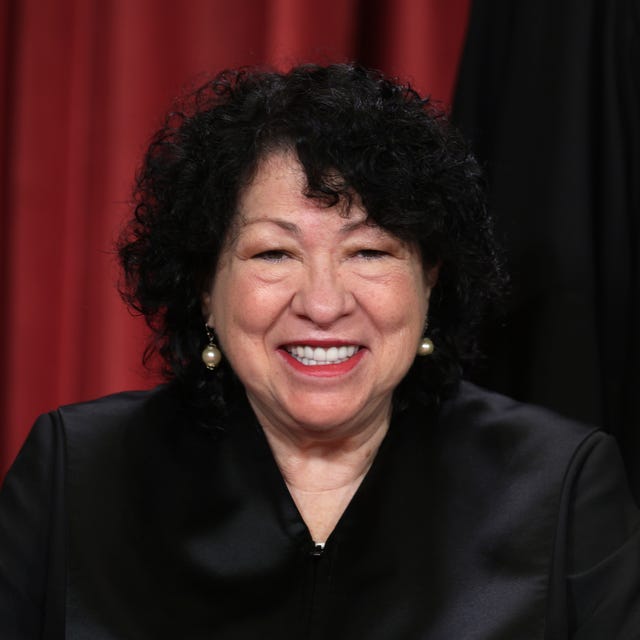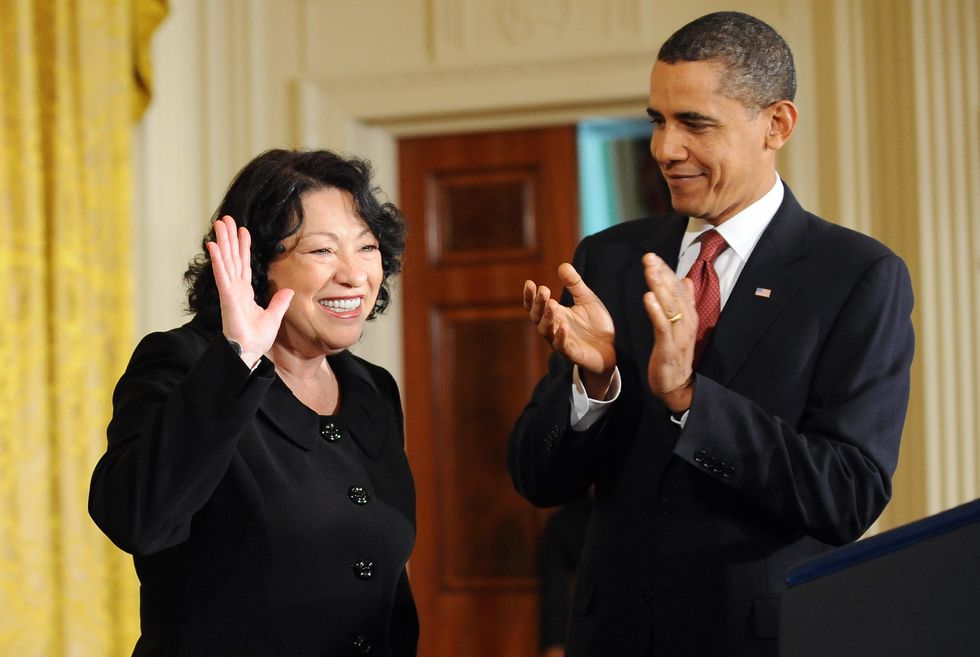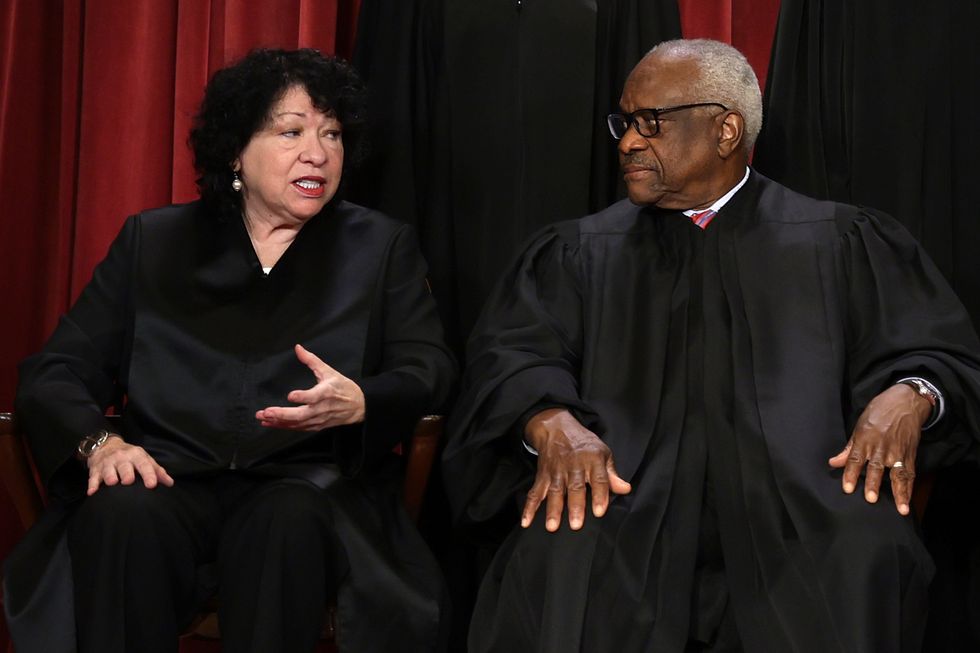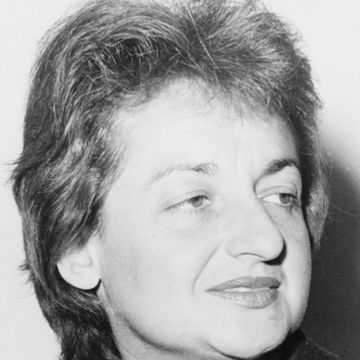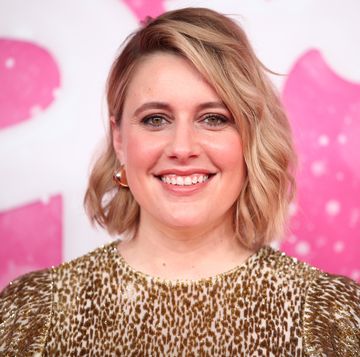1954–
Who Is Sonia Sotomayor?
Sonia Sotomayor is an associate justice of the Supreme Court of the United States, upon which she has served since 2009. Appointed by then-President Barack Obama following the retirement of Justice David Souter, Sotomayor is the first Latina Supreme Court justice in United States history, as well as the first woman of color to serve on the Supreme Court. Sotomayor previously served as a U.S. District Court judge starting in 1992 and was elevated to the 2nd Circuit Court of Appeals in 1998.
Quick Facts
FULL NAME: Sonia Maria Sotomayor
BORN: June 25, 1954
BIRTHPLACE: New York City, New York
SPOUSE: Kevin Noonan (1976–1983)
ASTROLOGICAL SIGN: Cancer
Early Life
Sonia Maria Sotomayor was born in the South Bronx area of New York City on June 25, 1954. She is the eldest of two children born to Juan and Celina Baez Sotomayor, who were of Puerto Rican descent. Sotomayor’s family functioned on a very modest income; Celina was a nurse at a methadone clinic, and Juan was a tool-and-die worker. Sotomayor was diagnosed with type 1 diabetes at age 7, which required daily insulin injections. Her father died of a heart attack when she was 9 years old.
After Juan’s death, Celina worked hard to raise her children as a single parent. She placed what Sotomayor would later call an “almost fanatical emphasis” on a higher education, pushing the children to become fluent in English and making huge sacrifices to purchase a set of encyclopedias that would give them proper research materials for school.
Sotomayor wanted to be a judge since elementary school. She first developed an interest in the justice system after watching an episode of the television show Perry Mason. When a prosecutor on the program said he did not mind losing when a defendant turned out to be innocent, Sotomayor later told The New York Times that she “made the quantum leap: If that was the prosecutor’s job, then the guy who made the decision to dismiss the case was the judge. That was what I was going to be.”
Education
Sotomayor graduated from Cardinal Spellman High School in the Bronx in 1972 and entered the Ivy League, attending Princeton University. Although highly accomplished in high school, her standardized test scores were not up to Princeton’s normal standards, and she wouldn’t have been admitted if not for affirmative action. In her 2013 memoir, My Beloved World, Sotomayor wrote that her experience is a strong example of the purpose of affirmative action: “to create the conditions whereby students from disadvantaged backgrounds could be brought to the starting line of a race many were unaware was even being run.”
Sotomayor initially felt overwhelmed at university. After receiving low marks on first midterm paper, she sought help, taking more English and writing classes. She also became highly involved with the Puerto Rican groups on campus, including Acción Puertorriqueña and the Third World Center. The groups, she said, provided her “with an anchor I needed to ground myself in that new and different world.” She also worked with the university’s discipline committee, where she started developing her legal skills.
Sotomayor’s efforts paid off when she graduated summa cum laude in 1976. She was also awarded the Pyne Prize, which is the highest academic award given to Princeton undergraduates. That same year, Sotomayor entered Yale Law School, where she was an editor for the Yale Law Journal. She received her juris doctor in 1979 and passed the bar in 1980.
Early Legal Career
Sotomayor immediately began working as an assistant district attorney in Manhattan, serving as a trial lawyer under District Attorney Robert Morgenthau. Sotomayor was responsible for prosecuting robbery, assault, murder, police brutality, and child pornography cases. She worked heavy caseloads and prepared meticulously for her cases, often working 15-hour days.
In 1984, Sotomayor entered private practice, running the solo law practice Sotomayor & Associates out of her Brooklyn apartment before joining the commercial litigation firm Pavia & Harcourt, where she specialized in intellectual property litigation. She moved from associate to partner at the firm in 1988.
While she climbed the ladder there, Sotomayor also served on the board of the Puerto Rican Legal Defense and Education Fund, the New York City Campaign Finance Board, the State of New York Mortgage Agency, and the Maternity Center Association. Sotomayor’s pro bono work at these agencies caught the attention of New York Senator Daniel Patrick Moynihan, who recommended her a federal judgeship.
Federal and Appellate Judgeships
With the vocal support of Moynihan and Senator Ted Kennedy, Sotomayor was nominated, in 1992, for U.S. District Court judge for the Southern District of New York City by President George H.W. Bush. The Senate unanimously confirmed her on August 11, 1992. She became the youngest judge in the Southern District, the first Hispanic federal judge in New York history, and the first Puerto Rican woman to serve as a judge in the federal judiciary.
On her 43rd birthday in 1997, Sotomayor was nominated for the 2nd U.S. Circuit Court of Appeals by President Bill Clinton, though delays and political machinations held up her Senate confirmation until the following year. She held that judgeship for nearly 11 years, during which time she heard appeals in more than 3,000 cases and wrote about 380 majority opinions. The New York Times described her as having “a reputation for asking tough questions at oral arguments and for being sometimes brusque and curt with lawyers who were not prepared to answer them.”
In addition to her work in the Court of Appeals, Sotomayor also began teaching law as an adjunct professor at New York University in 1998 and at Columbia Law School in 1999. She has also received honorary law degrees from Herbert H. Lehman College, Princeton University, and Brooklyn Law School, and served on the Board of Trustees at Princeton.
Supreme Court Nomination
On May 26, 2009, President Barack Obama announced his nomination of Sotomayor for the U.S. Supreme Court, following the retirement of Justice David Souter. Senate Democrats had previously suggested Sotomayor as an acceptable nomination for President George W. Bush following the 2006 retirement of Sandra Day O’Connor, though that appointment ultimately went to Samuel Alito.
Obama called Sotomayor “an inspiring woman” and said her appointment to the court would mark “another important step towards realizing the ideal that is etched above its entrance: equal justice under the law.” The nomination process did not go completely smoothly, with some prominent conservatives like Rush Limbaugh, Ann Coulter, and Newt Gingrich calling Sotomayor a “racist.” Former President George H.W. Bush condemned those remarks. Sotomayor was ultimately confirmed by the Senate in August 2009 by a vote of 68–31, making her the third woman and first Latina Supreme Court justice in the nation’s history.
At her appointment, Sotomayor was considered among the most ideologically liberal of the nine Supreme Court justices, although having replaced another liberal justice, she did not change the judicial body’s perceived balance of power. The New York Times noted that Sotomayor voted with fellow liberal Justices Ruth Bader Ginsburg and Stephen Breyer about 90 percent of the time.
Major Rulings
In 2011, Sotomayor wrote the majority opinion in the Supreme Court’s 5–4 decision on J. D. B. v. North Carolina, which found that a child’s age is relevant for Miranda warning purposes when determining whether a person is in police custody. She wrote: “Officers and judges need no imaginative powers, knowledge of developmental psychology, training in cognitive science, or expertise in social and cultural anthropology to account for a child’s age. They simply need the common sense to know that a 7-year-old is not a 13-year-old and neither is an adult.”
Sotomayor was in the majority on several notable rulings in 2012, including a 5–4 ruling that upheld most of the provisions of the Patient Protection and Affordable Care Act, Obama’s signature health care legislation often referred to as Obamacare. She also part of the 5–3 majority on Arizona v. United States, which struck down several aspects of Arizona SB 1070, a strict and controversial anti-immigration law that Arizona Governor Jan Brewer had championed.
In June 2015, Sotomayor was one of the six justices to uphold a critical component of the Affordable Care Act in King v. Burwell. The decision allowed the federal government to continue providing subsidies to Americans who purchase health care through exchanges, regardless of whether they are state- or federally operated. Sotomayor was credited as a key force in the ruling, having presented cautionary arguments against the potential dismantling of the law. That same month the Supreme Court ruled 5–4 in Obergefell v. Hodges that made same-sex marriage legal in all 50 states. Sotomayor joined Justices Ginsburg, Breyer, Kegan, and Anthony Kennedy in the majority, with Justices Alito, John Roberts, Antonin Scalia, and Clarence Thomas voting in dissent.
Dissent Opinions
With President Donald Trump’s appointment of Neil Gorsuch, Brett Kavanaugh, and Amy Coney Barrett to the Supreme Court, the balance of power has shifted to the conservative bloc in recent years, and Sotomayor has found herself appearing in minority decisions on several major Supreme Court rulings.
In June 2016, Sotomayor made headlines when she wrote a scathing dissent for Utah v. Strieff, a case involving civil liberties in regards to preventing unlawful search and seizures protected by the Constitution’s Fourth Amendment. Criticizing the 5–3 decision, she wrote: “The mere existence of a warrant not only gives an officer legal cause to arrest and search a person, it also forgives an officer who, with no knowledge of the warrant at all, unlawfully stops that person on a whim or hunch.” In describing how this law could be unfairly applied, she cited the civil unrest after a white officer shot and killed Michael Brown, an unarmed Black teenager, in Ferguson, Missouri, in 2014.
In April 2018, Justice Sotomayor suffered a shoulder injury from an accidental fall. Regardless, she was present for all major arguments that came before the court for the duration of the month, including Trump v. Hawaii, the administration’s controversial travel-ban case, before undergoing surgery on May 1. She was in the minority on the 5–4 ruling that upheld the validity of Trump’s Presidential Proclamation 9645, which restricted travel into the United States by refugees without valid travel documents.
Sotomayor has been a dissenting vote in several cases that restricted abortion rights in the United States. In 2021, she wrote a strong dissenting opinion in Whole Woman’s Health v. Jackson, a case that upheld a Texas law allowing private citizens to sue abortion providers. She wrote that the Supreme Court had previously ensured that constitutional rights “can neither be nullified openly and directly by state legislators or state executive or judicial officers, nor nullified indirectly,” but that “today’s fractured Court evinces no such courage.” In 2022, Sotomayor joined Kagan and Breyer in dissent on the 6–3 ruling on Dobbs v. Jackson Women’s Health Organization, which overturned Roe v. Wade (1973) and concluded the United States Constitution does not confer a right to abortion.
Personal Life
In 1976, Sotomayor married her high school sweetheart Kevin Noonan, a biologist and biotech patent lawyer. They divorced amicably seven years later and had no children.
Sotormayor loves cycling on trails and on local Washington, D.C., roads, and has described dance as her favorite art form. An avid reader, Sotomayor credited the Nancy Drew series with helping her discover female empowerment as a child and has described Agatha Christie’s Murder On the Orient Express and William Golding’s Lord of the Flies as other formative books for her.
Quotes
- Although I grew up in very modest and challenging circumstances, I consider my life to be immeasurably rich.
- Personal experiences affect the facts that judges choose to see.
- I would hope that a wise Latina woman with the richness of her experiences would more often than not reach a better conclusion than a white male who hasn’t lived that life.
- I want to state up front, unequivocally and without doubt: I do not believe that any racial, ethnic, or gender group has an advantage in sound judging. I do believe that every person has an equal opportunity to be a good and wise judge, regardless of their background or life experiences.
- I am an ordinary person who has been blessed with extraordinary opportunities and experiences. Today is one of those experiences.
Citation Information
- Article Title: Sonia Sotomayor Biography
- Author: Biography.com Editors
- Website Name: The Biography.com website
- Url: https://www.biography.com/legal-figures/sonia-sotomayor
- Access Date:
- Publisher: A&E; Television Networks
- Last Updated: March 6, 2023
Fact Check: We strive for accuracy and fairness. If you see something that doesn’t look right, contact us!..
The Biography.com staff is a team of people-obsessed and news-hungry editors with decades of collective experience. We have worked as daily newspaper reporters, major national magazine editors, and as editors-in-chief of regional media publications. Among our ranks are book authors and award-winning journalists. Our staff also works with freelance writers, researchers, and other contributors to produce the smart, compelling profiles and articles you see on our site. To meet the team, visit our About Us page: https://www.biography.com/about/a43602329/about-us
Colin McEvoy joined the Biography.com staff in 2023, and before that had spent 16 years as a journalist, writer, and communications professional. He is the author of two true crime books: Love Me or Else and Fatal Jealousy. He is also an avid film buff, reader, and lover of great stories.
